…should be one of the world’s great tourist
hotspots.
by Ben S.
Within a compact area in its far east, up against the Rwandan and Ugandan borders, you can observe some of the last remaining mountain gorillas, track chimpanzees through the forest, gaze upon the world’s largest lava lake, jump crevasses on Africa’s only glaciers, and swim in the crocodile and hippo-free waters of Lake Kivu.
Within a compact area in its far east, up against the Rwandan and Ugandan borders, you can observe some of the last remaining mountain gorillas, track chimpanzees through the forest, gaze upon the world’s largest lava lake, jump crevasses on Africa’s only glaciers, and swim in the crocodile and hippo-free waters of Lake Kivu.
Unfortunately, the deadliest conflict since 1945, a refugee crisis, rape
epidemic and widespread crime, corruption and disease mean that, while the
region is full of foreign visitors, travel companions are far more likely to be
UN soldiers, NGO bureaucrats or European war correspondents than fellow
tourists. Things are slowly changing –
since rebels were pushed out of Goma and into the forests in 2012, a steady
trickle of curious visitors have crossed the border from Rwanda to climb the
Nyiragongo volcano and commune with great apes, all under the watchful eye of
armed rangers from the Virunga National Park.
The first few days of my trip this past summer were under the protection of the
park authorities. One night was spent in
the understated luxury of a private bungalow at the Mikeno Lodge, watching monkeys
from the terrace and guided nature walks in the forest. Another I sat drinking wine by a campfire
with South African financiers and American NGO workers outside $280 per night
safari tents, eyes shining and voices trembling as recent memories of
encounters with mountain gorillas were recalled. Another night was passed shivering atop a
3500 metre volcano, awestruck at the sight of the cauldron of lava bubbling
below, while porters concocted a delicious dinner in the subzero night air, the
armed rangers and friendly, informative park staff a constant, unobtrusive
presence. Magical, unforgettable,
cliché-ridden and budget-destroying memories made, in as much security and
peace of mind as perhaps is possible in the Congo, thoughts of war and death
far away.
At the end of my trip, being deposited in Goma – the chaotic, often-destroyed/occupied/bombed, lava-strewn hub of the region, where the harsh, knife-edge realities of Congolese life play out to the tune of the whirring of UN helicopters and – in bad times – sounds of grenades and gunfire – I waved goodbye to my park ranger escort and realised that I was alone in Congo and under nobody’s protection other than my own. Well, not quite. I had found a local’s email address online and asked him if he’d want to be my guide for a few days. We had agreed to meet for a drink and to discuss plans. A part of me wasn’t entirely convinced that this was necessarily the safest or most reliable way to travel in Congo, but a $2000 2-day trip with a travel agency wasn’t really an option. And so it was that I found myself meeting Rene, and agreeing to travel with him to his ancestral homeland of Idjwi island.
At the end of my trip, being deposited in Goma – the chaotic, often-destroyed/occupied/bombed, lava-strewn hub of the region, where the harsh, knife-edge realities of Congolese life play out to the tune of the whirring of UN helicopters and – in bad times – sounds of grenades and gunfire – I waved goodbye to my park ranger escort and realised that I was alone in Congo and under nobody’s protection other than my own. Well, not quite. I had found a local’s email address online and asked him if he’d want to be my guide for a few days. We had agreed to meet for a drink and to discuss plans. A part of me wasn’t entirely convinced that this was necessarily the safest or most reliable way to travel in Congo, but a $2000 2-day trip with a travel agency wasn’t really an option. And so it was that I found myself meeting Rene, and agreeing to travel with him to his ancestral homeland of Idjwi island.
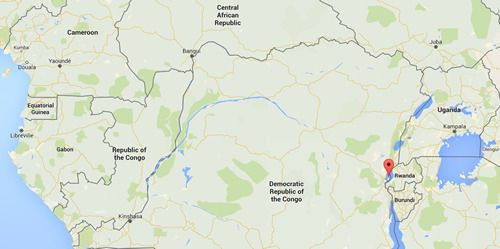
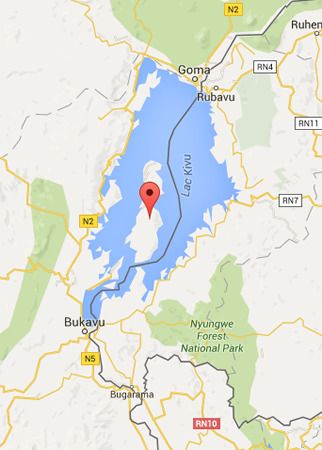
Idjwi’s claim to fame is being the world’s tenth largest inland island- a
source of pride to many a local – but perhaps it should be better known for its
appallingly high rate of tropical diseases and 27 year life expectancy. It was odd to think that, in the week before
turning 30, I’d be on borrowed time by island standards. About the only information you can find in
English about Idjwi is a Vice article on the healthcare crisis on the island –
incidentally I was to find myself eating pasta in Goma the night before my trip
with the British journalist who wrote that article. Rene had told me we’d need to be up at 5am in
order to catch the ferry to the island, and that in order to get to the port,
we’d need to hire motorbike taxis.
Having made it to 29 without ever sitting atop a two-wheeled contraption
of death, this prospect scared me more than any of the other numerous likely
ways to die* in and around Goma, not least because the city roads largely
consist of potholes surrounded by lava rocks (a legacy of the 2002 destruction
of the city by volcanic eruption).

*including,
but not limited to, rebel grenade attack, war, volcanic eruption, asphyxiation
by sudden release of noxious gases from Lake Kivu, any one of numerous tropical
diseases, chimpanzee attack, being run over by NGO landcruiser.
The early start wasn’t really necessary, as one boat was cancelled, the next
one broke down (after we had departed; fortunately it managed to eventually
limp its way back into the dock), and in the end, after much chaos, shouting
and confusion, we managed to get tickets for the 9pm departure. And so the day was spent hanging out in Goma
with Rene’s family, learning key phrases in Swahili and Kihavu, taking more
terrifying moto rides (I eventually began to relax my deathgrip on the driver,
and even managed to eventually take photos while riding), and discussing plans
for my stay on the island while being reassured that, yes, while many boats do
sink and many people drown every year, our boat was safe and we’d definitely
arrive unscathed. Eventually we made our
way back to the port and made our way onto the boat.
And so the adventure really began. To describe Idjwi as ‘undiscovered’ would be
an error. Hundreds of thousands of
conflict-fleeing Congolese have discovered a peaceful, safe haven on the island
in the last few years. For while Idjwi
is lacking even by Congolese standards in healthcare and basic development
(there are, for example, 10 cars on the island – one per 25,000 people,
outnumbering doctors by a considerable margin), it is at peace. Malnutrition is rife, employment almost
non-existent, and the poverty striking, but it’s a world away from the palpable
tension of the mainland, with its blue helmets, forbidding compounds and the
constant sight of guns. My time on the
island was spent talking with locals, swimming in the lake, eating tiny fried
fish and riding on the backs of yet more motorbikes along dusty red tracks,
looking out over the hilly, tree-drenched coastline and glassy waters of the
expansive lake.
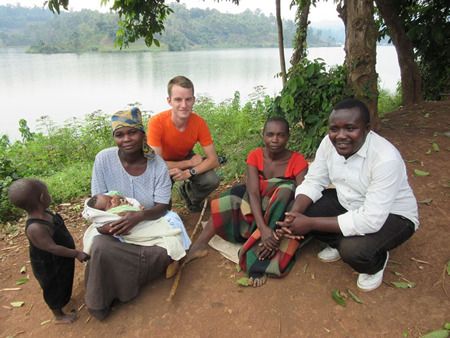

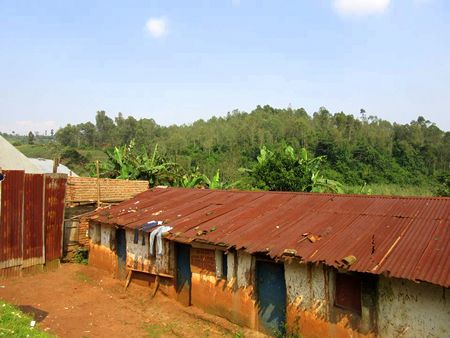
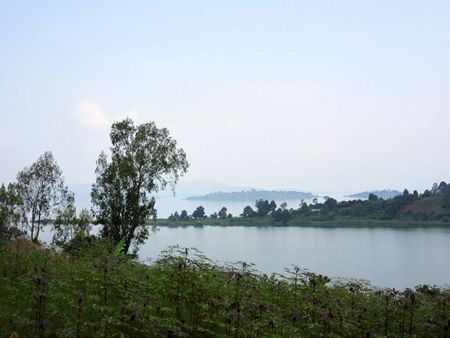
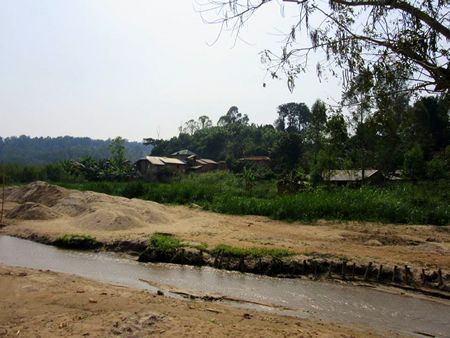
Somehow it felt wrong to
be so relaxed while aware of the brutal statistics about life and death in this
rural idyll, but everyone I spoke to was glad that I had come and wanted me to
get the word out to encourage more visitors to their island. Visiting is neither easy nor comfortable, but
as a side-trip to the spectacular but tourist-packaged Virunga Park experience,
a few days on Idjwi before catching the morning boat to Goma’s even more
frenetic, chaos-ridden Southern counterpart, Bukavu, is something I’d highly
recommend to any tourist in Congo.
When I think about my short time in the Congo, it’s not the gorillas, the
volcano or my decadent bungalow in the jungle which come straight to mind. Nor is it war and the news reports of untold
human suffering it brings. Rather, it’s jumping off the bow of an overcrowded
ferry into a reedbed before dawn and scrambling in the dark up a steep bank of
dirt to wait for a lift to the village which may or may not come. It’s sitting on the elevated terrace of a bar
in Bukavu buying beers for a wanted man (he swore he was innocent) while he
shows me the ‘WANTED’ poster with his name on it as the military search for him
through the streets below. It’s that first,
heart pounding ride on a motorbike through the chaos of Goma, clambering over
sacks of vegetables in the coffin-dark hull of a supposedly unsinkable boat,
frowns turning to smiles at a Swahili greeting.
Not just the world-class attractions which hopefully, one day, will
bring in the tourist hordes, but simply being in Congo and the tiny moments
that, together, make for one big, unforgettable adventure.


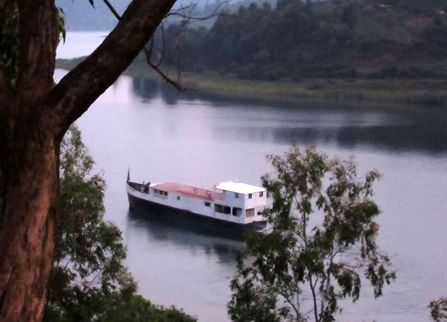
the pictures are really amazing. People who are really concerned about their next trip must use a detailed road map to plan everything well. If you are planning to visit Spain then you must have the Spain Road Map so as to find your way easy in an unknown place.
ReplyDeleteWonderful post!!! Genuinely loved this kind of post. Although I want much more information on like precious subject matter.
ReplyDeleteEmergency Supplies | Refugee Tents
Such a nice and informative blog.
ReplyDeletehttp://360vacationcenter.com
Very nice post with amazing pictures. Thank you very much for sharing it.
ReplyDeleteUnsold airline seats
beautiful areas of congo
ReplyDeletemeet and greet gatwick
meet and greet parking gatwick
Photos you shared in this blog is really looking fantastic and nicely clicked. I am glad to read your blog.Thanks for sharing your experience and photos with us, keep posting like this.
ReplyDeleteKolkata escorts upbeat to have run over and looked through your blog.
ReplyDeleteEscorts in Kolkata
Kolkata Escorts Services
Escorts Services in Kolkata